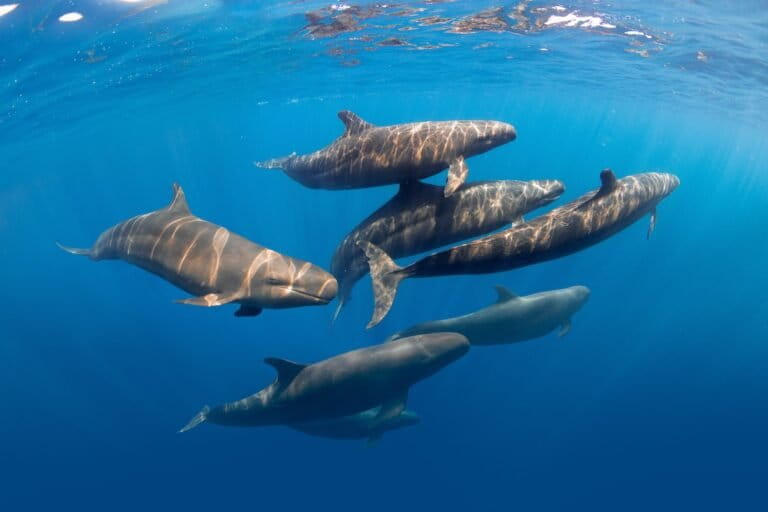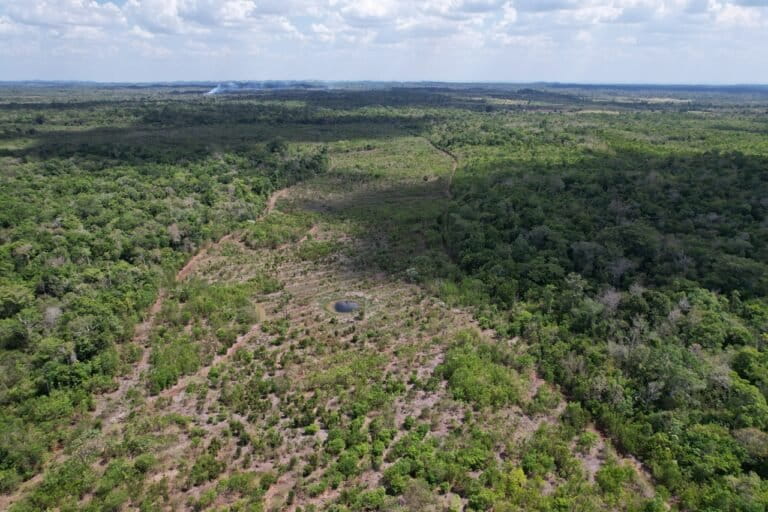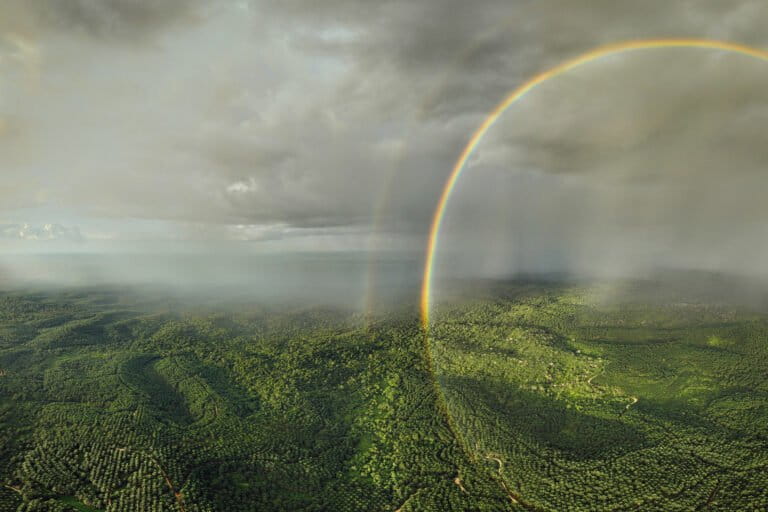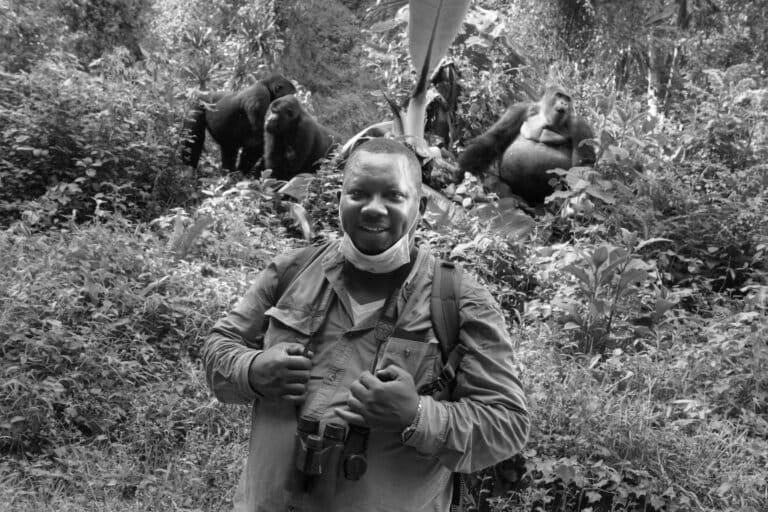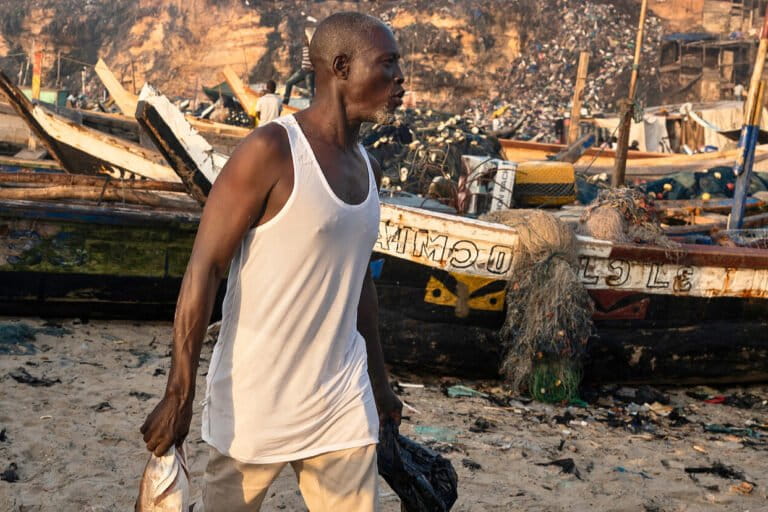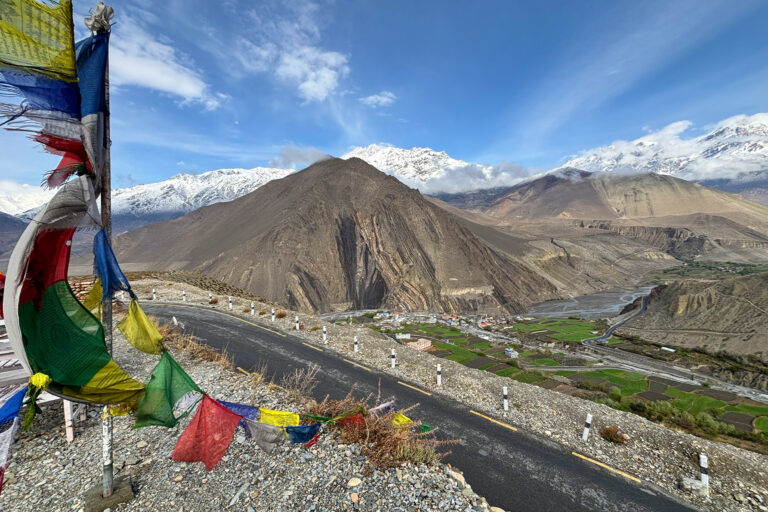- Until recently, protecting the environment was a bipartisan issue for Americans. But in an era marked by bitter divides, this is no longer the case.
- Bruce Babbitt, former governor of Arizona and Secretary of the Interior in the Clinton Administration, believes that environmental protection can again be a unifying issue for Americans. But to get there, advocates will need to rebuild consensus around issues that have wide support, like public lands and the benefits afforded by a healthy environment, and engage stakeholders who have often been ignored.
- Babbitt’s views are grounded in his long career in public office where he had to consistently navigate political divides: first as a Democratic governor in a traditionally conservative state with a Republican legislature, then as a member of the cabinet in the Clinton Administration when Republicans controlled Congress from 1994 through 2000.
- Babbitt spoke about his work, his ideas on how to build constituencies to bridge political divides on environmental issues, and his concerns about climate change during an October 2020 interview with Mongabay founder Rhett A. Butler.
Until recently, protecting the environment was a bipartisan issue for Americans. But in an era marked by bitter divides, this is no longer the case.
Bruce Babbitt, former governor of Arizona and Secretary of the Interior in the Clinton Administration, believes that environmental protection can again be a unifying issue for Americans. But to get there, advocates will need to rebuild consensus around issues that have wide support, like public lands and the benefits afforded by a healthy environment, and engage stakeholders who have often been ignored.
“To broaden support for public lands we can begin by reminding all Americans that the public lands, parks, wildlife refuges, rivers, and national forests are our common heritage, a unique historical legacy meant not for private exploitation, but rather for the preservation of open spaces, wildlife habitat and for use and enjoyment of all,” Babbitt told Mongabay. “Whatever the outcome of the November election we have a large task to rebuild the national consensus that produced the great environmental laws of the 60s and 70s under both Democrats and Republicans.”

Babbitt’s views are grounded in his long career in public office where he had to consistently navigate political divides: first as a Democratic governor in a traditionally conservative state with a Republican legislature, then as a member of the cabinet in the Clinton Administration when Republicans controlled Congress from 1994 through 2000. He sees the environmental justice movement, public health experts, and farmers as three logical constituencies for better environmental stewardship.
“African Americans, Latinos and other communities of color are often victimized by the siting of toxic waste dumps, oil refining and chemical plants, and inadequate regulation of pesticides in agriculture,” he said. “The smoke drifting eastward across the country from Oregon and California is a public health threat that should awaken all Americans to the dangers of climate change.”
“Climate induced drought threatens water supplies and should awaken local governments to join us in calling for action.”
Since Babbitt left public office in 2001, he has served on numerous boards and helped start two conservation organizations: the Amazon Conservation Association, which works does scientific and policy work in support of rainforest conservation in the Western Amazon, and the Conservation Lands Foundation which advocates for “proper” environmental management of Bureau of Land Management (BLM) lands.
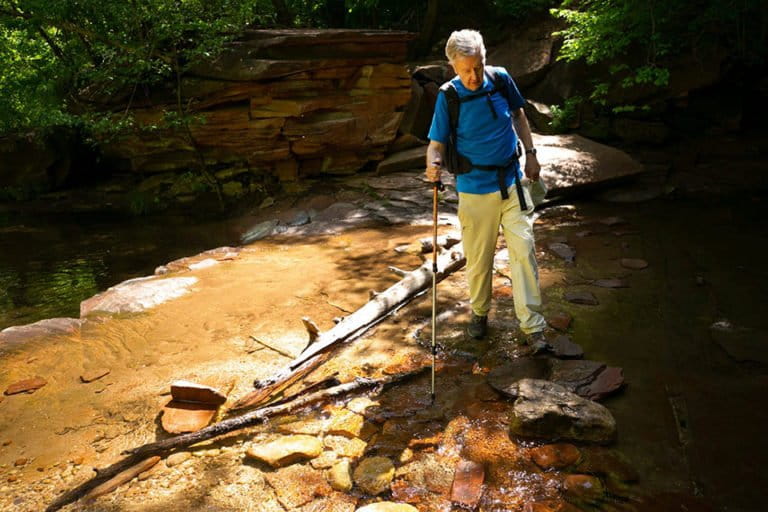
Babbitt spoke about his work, his ideas on how to build constituencies to bridge political divides on environmental issues, and his concerns about climate change during an October 2020 interview with Mongabay founder Rhett A. Butler.
AN INTERVIEW WITH BRUCE BABBITT
Rhett A. Butler for Mongabay: What inspired your interest in conservation and the environment?
Babbitt: My conservation interest developed at an early age on the landscapes of northern Arizona. The region is a geology textbook; everywhere you look the land opens to another page of earth history inviting engagement.
After college, I did graduate work in England at the University of Newcastle in a research group pioneering the emerging science of plate tectonics. However eventually I figured out that I was not meant for an academic career and from there I drifted into law school, then into the civil rights movement, and finally back to Arizona and political life.

Mongabay: Between issues like the spotted owl debate and reintroducing wolves to Yellowstone, you’ve proven adept at navigating the complicated politics around environmental policy in the United States. What are some of your tactics and strategies for getting things done?
Babbitt: My approach to getting things done at Interior was shaped by my experience in Arizona politics. To win elections and then to work with a Republican legislature in a conservative state required a lot of patience and consensus building, constantly getting out on the ground to engage directly with local communities, listening carefully to diverse interests and differing opinions, finding common ground, and building coalitions.
When President Clinton invited me to Washington to become Secretary of the Interior, I soon learned there would not be any ground-breaking legislation on our watch. The Congress was simply too divided and deadlocked to make much progress.

Happily, I also discovered that many existing environmental laws had a lot of unexplored potential, among them the Antiquities Act and the Endangered Species Act. My chance to leave a legacy for President Clinton would be to breathe new life into many old laws that had lain dormant.
For more than a century, presidents had used the Antiquities Act almost exclusively for expansion within the National Park System. But nothing in the Act limits its use to National Parks.
The Bureau of Land Management (BLM) which manages the largest acreage of our public lands had been entirely overlooked. Here was an opportunity just waiting to create an entirely new system of landscape scale monuments within the BLM.
We began with the Grand Staircase-Escalante National Monument, followed by Grand Canyon Parashant, Missouri Breaks, Carrizo Plain and many more. Before long, suggestions for new BLM monuments were coming in from all across the West. We had discovered a huge reservoir of popular support outside Washington.
As the process gained momentum, more than a few Republican members of Congress, awakening to local support, decided to join in the process and reap credit with their constituents. That in turn provided the leverage for us to get out on the land, surface proposals and then work out a variety of additional proposals for Congressional participation including National Conservation Areas like at Oregon’s Steens Mountain, a BLM wilderness area and even several legislative National Monuments.
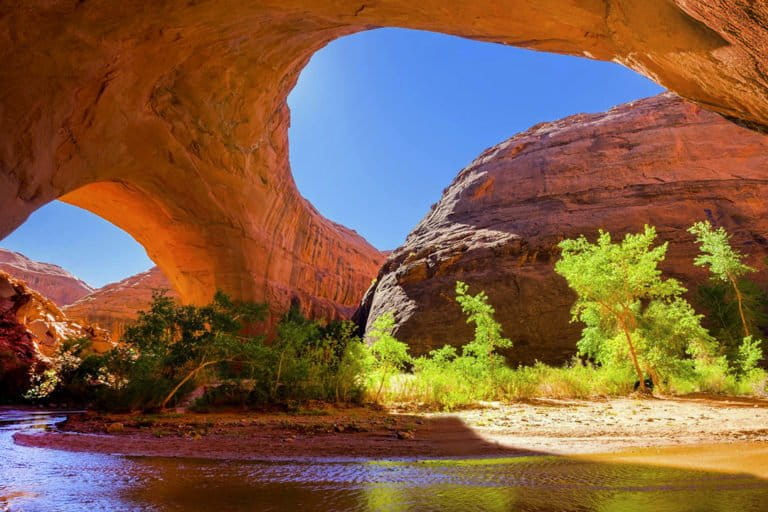
The Endangered Species Act, our most powerful law for biodiversity and wildlife protection, offered another especially important new opportunity. Our predecessors had taken the preliminary regulatory step of listing several hundred species as threatened or endangered. But the process had stalled when it came to mapping and designating the habitat necessary to assure survival and recovery of the species. Members of Congress opposed to any form of land use regulation began intervening in opposition.
Our opening to break the impasse came in the Pacific Northwest where we negotiated a plan to protect the habitat of the spotted owl and other threatened species. The Northwest Forest Plan, a multispecies Habitat Conservation Plan, provides legal protection for nearly 20 million acres of National Forest and BLM lands.
From there we turned to the South to work with Georgia Pacific and other timber companies to protect habitat of the red cockaded woodpecker and other species endemic to the long leaf pine forests that extend from the Carolinas to Texas. The plan mandates timber rotation cutting practices to preserve the essential acreage of old growth habitat.
Southern California provided the ultimate test of this new multispecies habitat planning process. It began with another bird, the California gnatcatcher, that ranged across coastal sage lands squarely in the path of onrushing development.

The resulting habitat conservation plans now require land developers to set aside a reasonable portion of undeveloped land as permanent habitat preserves in exchange for the right to develop the balance. This process brought us into negotiations with hundreds of landowners and many local governments and generated a lot of innovation, including the development of conservation land banks that allow developers to meet mitigation requirements by purchasing credits from privately financed habitat land banks.
These initial efforts have now generated hundreds of habitat conservation plans across California and throughout the country.
Mongabay: Historically conservation has been a unifying issue in the United States, but today it seems politically divisive. How can the constituency around the environment be restored? And along those lines, what would your strategy be to build a broader coalition of support so that everyone feels like the country’s public lands are theirs, whether they’re from the city or rural areas, or they identify as people of color?
Babbitt: To broaden support for public lands we can begin by reminding all Americans that the public lands, parks, wildlife refuges, rivers, and national forests are our common heritage, a unique historical legacy meant not for private exploitation, but rather for the preservation of open spaces, wildlife habitat and for use and enjoyment of all.
The Bureau of Land Management remains a priority for me as it is the least known and appreciated of our public lands agencies. It is BLM lands that are most vulnerable to resource raiding and exploitation and in need of wider public recognition and support.
After leaving Interior at the end of the Clinton administration we created a new NGO, Conservation Lands Foundation, to advocate for proper environmental management of BLM lands.
A major initiative to broaden support at the local level, led by our chairman, Ed Norton, has been to provide financial support and technical assistance to “Friends Groups” of grass roots supporters in regions adjacent to new and future national monuments.
An example is Utah Diné Bikéyah, a Native American group initially organized to advocate for creation of Bears Ears National Monument. This group has expanded its mission to advocate for protection of the many important cultural sites that have been so often overlooked and ignored in the administration of public lands.

We must recognize the key role of rivers that flow through and connect across the landscapes that contains parks refuges, and national forests.
The dam removal movement is a new development that holds great promise for public involvement in river restoration.
In 1999 Interior initiated the dam removal era by taking out three small dams blocking fish passage on the Neuse River in North Carolina. Within a year, anadromous shad returned, migrating inland clear up to the city of Raleigh.
What followed was a remarkable, spontaneous movement for dam removal projects throughout the country that has so far resulted in removal of more than a thousand obsolete and unnecessary dams.
Mongabay: Outside my window here in California I cannot see the trees that are a few hundred feet away due to the choking smoke from fires raging across the state. How do we go about addressing the environmental calamities — from fire to drought — increasingly prominent in the American West?
Babbitt: A frequent response to the fire catastrophes raging throughout the country is “cut more trees.” However just taking up the ax can have serious consequences for loss of species and destruction of forest ecosystems.
When we came to Interior in 1993, the fire problem was already becoming apparent, underscored by the loss of 13 BLM and Forest Service firefighters in a blowup on Storm King Mountain in Colorado.
To get a better understanding of the problem, I went to fire school, completed the course, got my red card, and joined a BLM Hot Shot Crew.
I then spent several weeks each summer working on fire lines all around the West, in the process learning a lot about how the forests have changed over the last century due to drought, excessive logging, suppression of periodic natural fires and a variety of other causes.


That led me to Wally Covington, a forest researcher at Northern Arizona University. Wally was pioneering a model for treating overgrown forests based on selective forest thinning and application of prescribed fire, a concept now called Ecological Restoration.
We funded his demonstration project on Mt Trumbull north of the Grand Canyon, from which he expanded ecological forest restoration into community fire protection programs across the Southwest.
To implement one such plan, the City of Flagstaff, Arizona passed a $10,000,000 bond issue, probably the first of its kind, to finance a fire safe zone in the ponderosa forests surrounding the city.
I am describing this in some detail because we must urgently promote the concept of ecological forest restoration, starting in the urban wildland interface, with strong federal, state and local participation, across the West.

The other half of the forest equation is the people side. We must use planning and zoning to steer development away from fire-prone lands, and to modify building codes to require fire-proof construction practices. These steps to minimize fire damage can be unpopular to some, but they make a lot of sense to anyone who has ever walked through a burned over subdivision where there is nothing left standing but brick chimneys.
Mongabay: As Secretary of the Interior and Governor of Arizona, you’re well known for conservation efforts in the United States. But you’ve also been involved with conservation abroad, especially in the Amazon. What are your priorities internationally?
Babbitt: As a graduate student I spent a summer in Brazil and Bolivia doing geology field work. The tropics were an exhilarating contrast to the desert expanses of Arizona and over the years I have continually been drawn back to the region.
After leaving Interior I helped organize Amazon Conservation Association, an NGO that has grown into a network that includes partner national organizations in Peru and Bolivia. In the headwaters of the western Amazon basin we work with government agencies to establish national parks and indigenous protected areas and to combat fires, illegal logging, and the wildlife trade.

ACA also operates a unique network of tropical research observatories that extend from the cloud forests at the summits of the Andes down into the lowland rain forests. These research hubs conduct long term monitoring to document and understand the way forest ecosystems migrate up the Andean front in response to climate change and to devise mitigation programs.
Mongabay: We’re on the cusp of the U.S. election. If there’s a change in administration, what would you see as the top priorities when it comes to conservation and the environment? And if there’s not a change in administration, what do you see as the best way forward on these fronts?
Babbitt: Whatever the outcome of the November election we have a large task to rebuild the national consensus that produced the great environmental laws of the 60s and 70s under both Democrats and Republicans.
We must reach out to new constituencies that share our concerns. A good example is the environmental justice movement.
African Americans, Latinos and other communities of color are often victimized by the siting of toxic waste dumps, oil refining and chemical plants, and inadequate regulation of pesticides in agriculture.
The smoke drifting eastward across the country from Oregon and California is a public health threat that should awaken all Americans to the dangers of climate change.
The American Public Health Association, long an effective advocate for a clean environment and the benefits of outdoor activity, is now becoming a strong voice for action on climate change. Doctors and nurses are especially credible on these issues; they should be included in climate action programs in every community.

Public lands are critical watersheds for urban water supplies throughout the nation. Climate induced drought threatens water supplies and should awaken local governments to join us in calling for action.
Mongabay: Looking beyond the upcoming election, what is your outlook for U.S. policy around public lands and conservation? And are there lessons to be learned from the Trump presidency that might allow policy to be more resistant to political whims?
Babbitt: My biggest concern is our failure to deal with climate change.
My greatest hope is that we will awaken to the oncoming catastrophe and at last begin to act aggressively.
Our seeming inability to act is certainly due to denial and failure of leadership by our elected officials. But the blame is shared by those for whom global warming is seen as an abstraction, of little consequence in our daily lives and, in any event, something that can be sorted out in the always receding future.
The days of denial and inaction are now at an end. The onslaught of climate change is drying up rivers, killing forests, bringing catastrophic fires, disrupting wildlife migration routes and accelerating species loss, intense storms, and coastal flooding, and appearance of tropical diseases.

It is these tangible changes that have finally awakened communities throughout the country, giving us hope that public opinion will now intensify and motivate our leaders to act.
Our challenge in each of our communities is to show specifically how these threats are compromising our daily lives. In my state of Arizona, Phoenix has just had the hottest summer on record and, as summer temperatures rise toward 130 degrees, public health problems will proliferate and living conditions become unbearable.
The flow of the Colorado River which supplies water to much of Arizona is projected to decline by 30% in this century, posing the question of whether growth can continue in the American Southwest. In Northern Arizona fires have ravaged the great ponderosa pine forests, and with rising temperatures many areas will revert to desert devoid of these magnificent trees.

Ironically, as this bad news continues, it may generate some good news: that we can summon the will and the leadership to address our climate future.
Mongabay: You’ve had a long career that’s been full of incredible achievements. What achievement on the conservation front are you most proud of?
Babbitt: That’s easy—bringing the wolves back to Yellowstone. The howl of the wolf, resonating across the land, is a call to action., and a reminder that we must learn to live in harmony with the natural world.
Related interviews
:
- Can public lands unify divided Americans? An interview with John Leshy
by Rhett A. Butler 14 September 2020 - One man’s quest to save the world’s wildest places: Hansjörg Wyss
by Rhett A. Butler 18 October 2017







